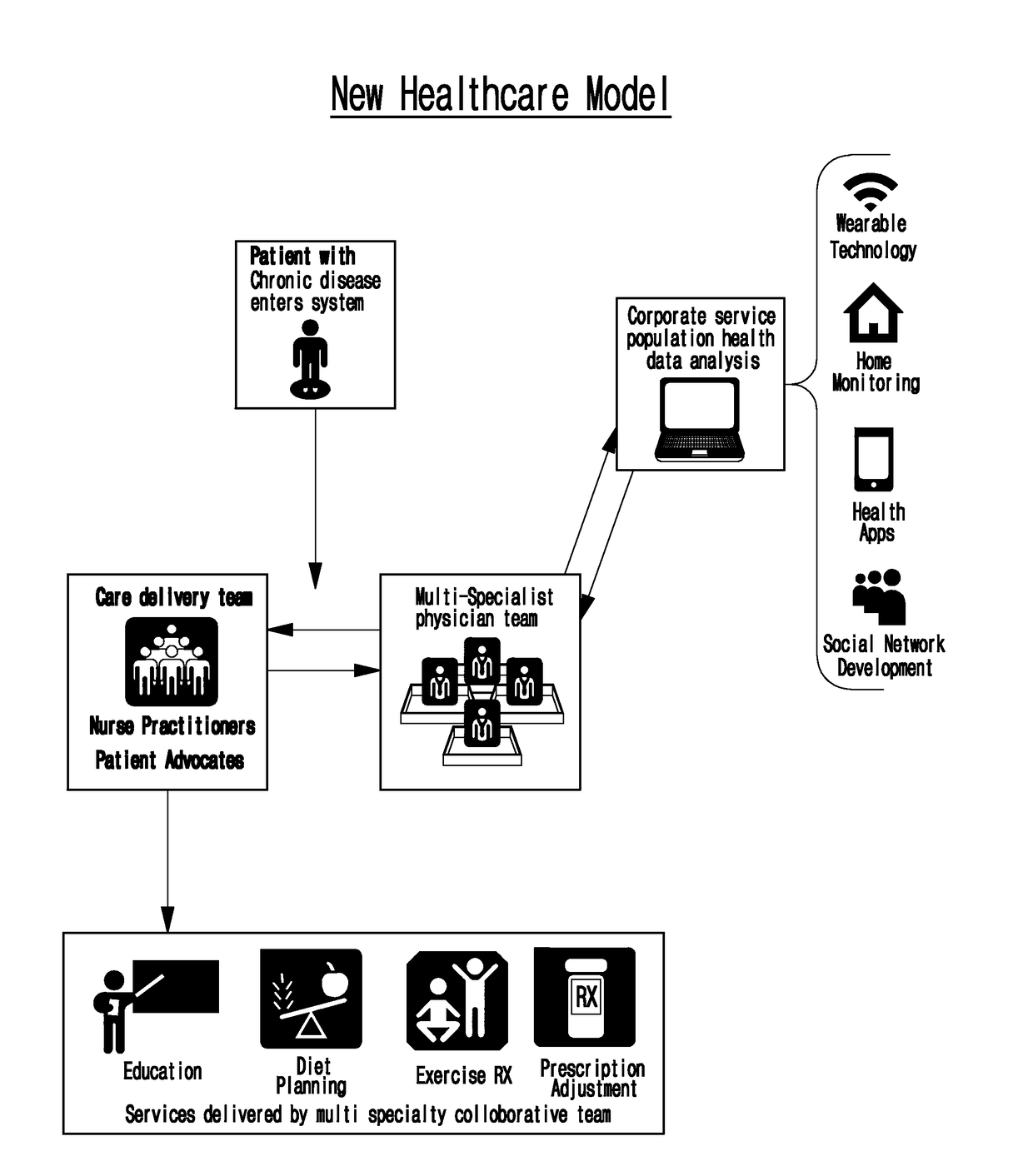Healthcare delivery system
a health care and system technology, applied in the field of health care delivery systems, can solve the problems of significant communication problems, unsustainable health care cost, and significant fragmentation of care for patients with any chronic condition
- Summary
- Abstract
- Description
- Claims
- Application Information
AI Technical Summary
Benefits of technology
Problems solved by technology
Method used
Image
Examples
Embodiment Construction
[0027]The following detailed description is of the best currently contemplated modes of carrying out exemplary embodiments of the invention. The description is not to be taken in a limiting sense, but is made merely for the purpose of illustrating the general principles of the invention, since the scope of the invention is best defined by the appended claims.
[0028]Broadly, an embodiment of the present invention provides a healthcare delivery system that embodies methods of empowering collaborative multidisciplinary healthcare for providing care to patients with chronic conditions.
[0029]Referring to FIGS. 1 through 3, the present invention may include at least one computer with a user interface. The computer may include at least one processing unit coupled to a form of memory. The computer may be any computing device including, but not limited to, desktops, laptops, and smart devices such as a tablet, smart watch, smart phone, and the like. The computer includes a program product inc...
PUM
 Login to View More
Login to View More Abstract
Description
Claims
Application Information
 Login to View More
Login to View More - R&D
- Intellectual Property
- Life Sciences
- Materials
- Tech Scout
- Unparalleled Data Quality
- Higher Quality Content
- 60% Fewer Hallucinations
Browse by: Latest US Patents, China's latest patents, Technical Efficacy Thesaurus, Application Domain, Technology Topic, Popular Technical Reports.
© 2025 PatSnap. All rights reserved.Legal|Privacy policy|Modern Slavery Act Transparency Statement|Sitemap|About US| Contact US: help@patsnap.com



